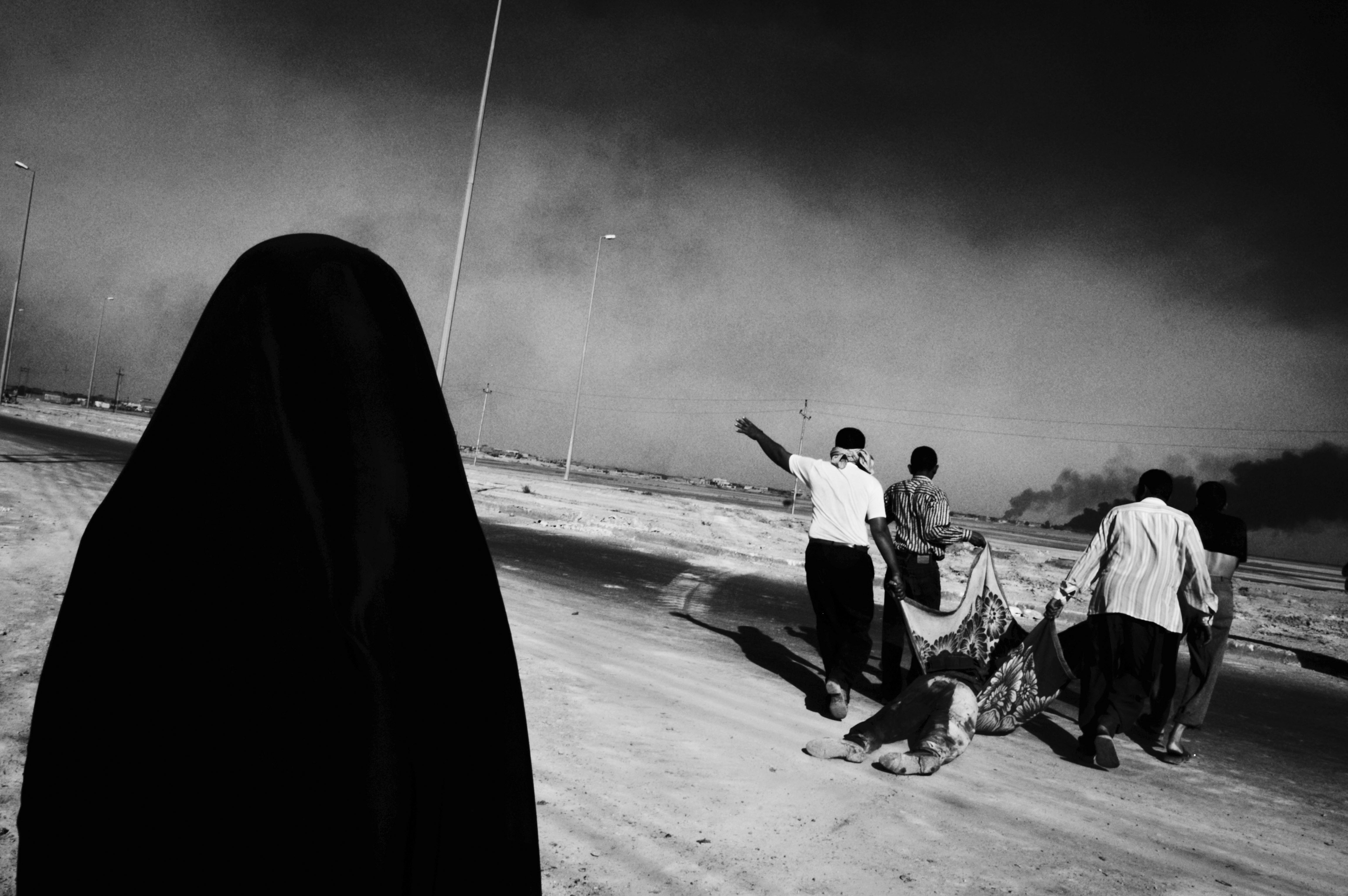
(Photo: Paolo Pellegrin/Magnum Photos)
Iraq, 2003. Italian photographer Paolo Pellegrin is in the field. In a rented jeep filled with gas, water, and food, he is driving behind the first wave of the United States-led invasion, from Kuwait to Baghdad. On the outskirts of Basra, in the country’s southern tip, he comes upon severe shelling, and pulls over. The British have just taken a strategic target, Basra’s Technical Institute, from pro-Saddam Hussein militia. Several dead militants lie on the ground, rocket launchers strewn around them. Another car arrives and parks ahead of Pellegrin. Men get out, recognize one of the dead, and drag the body toward their trunk. It has already started to decompose in the sweltering heat. A woman looks on in shock. Pellegrin takes the picture.
Later that year, Pellegrin became an associate member of Magnum Photos, one of the last steps before full agency membership, which he obtained in 2005. This photograph from Iraq reveals his unique sensibility. The ominous figure in the foreground, reminiscent of the symbol for impending death, remains especially poignant today, following 14 straight years of chaos and violence. After more than two peripatetic decades of assignments in the Balkans, Lebanon, Palestine, and Afghanistan, among many other places of conflict, Pellegrin is still out there, carefully documenting the anguish of war.

Where are you coming back from?
I guess it was Iraq—Mosul. I was there for several weeks in November. I have a longstanding relationship with the New York Times Magazine, especially with Kathy Ryan, the picture editor there, who has been extremely important and influential in my career. The way we work now is that these projects are more a result of a dialogue; it’s not really that they assign me. I have been covering the Middle East for many, many years. I had just published a few months prior a very large piece on the Middle East with a writer called Scott Anderson. In discussing with Kathy and Jake Silverstein, the editor, what my next projects would be, I mentioned Mosul. So when the offensive started, I went.
So they just tell you something like, “Go on the ground and tell us what you see?”
It’s a little bit more focused than that, but yes, it can start with a general idea. In this case, Mosul is a very important story. The whole idea of the caliphate having a physical space is embodied in two cities, Raqqa in Syria and Mosul in Iraq. These are the two capitals of the Islamic State. It’s also something that has been two and a half years in the making, this idea of liberating or reconquering Mosul by the Iraqi army, by the peshmerga (the Kurdish forces), by the coalition. I think, in broader terms, it can be a turning point in the story of Iraq, but also in the larger picture of what ISIS is and might become once it doesn’t have a physical hold on large parts of territory. Once Mosul is gone, I think Raqqa will fall pretty shortly.
Considering how big the story is, how did you approach it once you arrived on the ground?
In this case, the story was the initial motions of this effort to liberate Mosul. I went with a writer, James Verini, with whom I had worked in the past. We followed the peshmerga, and then, when they finished their part, we switched over to several units of the Iraqi army to go inside Mosul proper, in the east part of the city. The east was conquered as a result of the battles that I followed, in part. Actually, the operations to liberate western Mosul just started yesterday. It will be even more complicated, because the west of the city is where the old town, the medina is. The streets are very narrow, and that’s where the ISIS militants concentrated all the remaining forces.
You mentioned the 18-month assignment that you recently did for the New York Times Magazine. How do you approach such a long assignment?
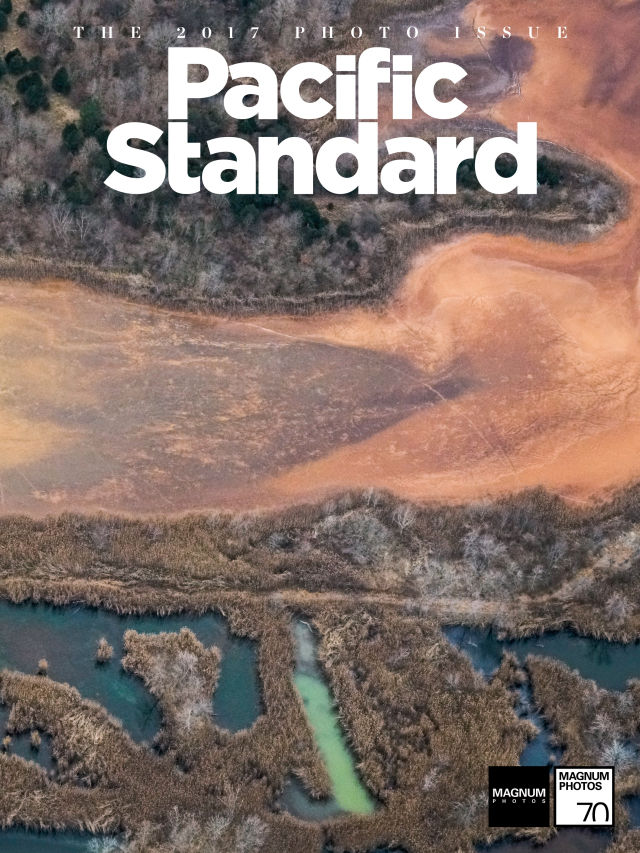
(Photo: Peter Van Agtmael/Magnum Photos)
Scott, the writer, is a very close friend of mine. It was Kathy’s genius to pair us together nearly 20 years ago for a story we did in Albania. We have become inseparable ever since. Over the course of these 20 years, we did a good many number of stories that, for the most part, we proposed together as a team. The genesis of this story was a little different because the editor at the Times had just changed—Jake, who is really brilliant, I have to say. We first started discussing ideas about a year and a half before the five-year anniversary of the start of the Arab Spring in Tunisia. We thought it would be interesting to prepare a long-term piece, giving ourselves time to work. Originally it was going to be more of a travelogue, but then it changed, as these things do. The idea was to try and get to the five-year mark having explored most of the countries that had been either directly or in some ways affected by the various Arab Spring revolutions. After a lot of talking and soul-searching—because, of course, it’s a brilliant commission but also extremely complex and daunting—we decided to work through a series of characters whose stories could work both as an individual narrative but also have a larger echo, and become a metaphor of the larger story. I think Scott was really brilliant in covering so much ground and so much history in that piece.
Had you met these characters on previous assignments, or were they all new stories you came across during that time?
Some people we knew, like an Iraqi girl called Khulood [al-Zaidi] who is an activist for women’s rights. … We had met her a few years before in Syria. And an Egyptian, Laila Soueif—another well-known activist who comes from a prominent dissident family. The others we met along the way.
You left for Mosul a few months after this piece was published. After witnessing the first part of the offensive, are you hopeful?
Yes and no. First of all, who am I to know about this? Personally, I don’t think this is the end of ISIS by any means, or the end of the ideologies behind it. If anything, it will be transformed. If and when they lose their hold on the land, that doesn’t mean they’ll disappear. If anything, it means that Europe will probably see more foreign fighters coming back, or more attacks. It’s a generational struggle. It’s not something that can be won militarily with one battle.
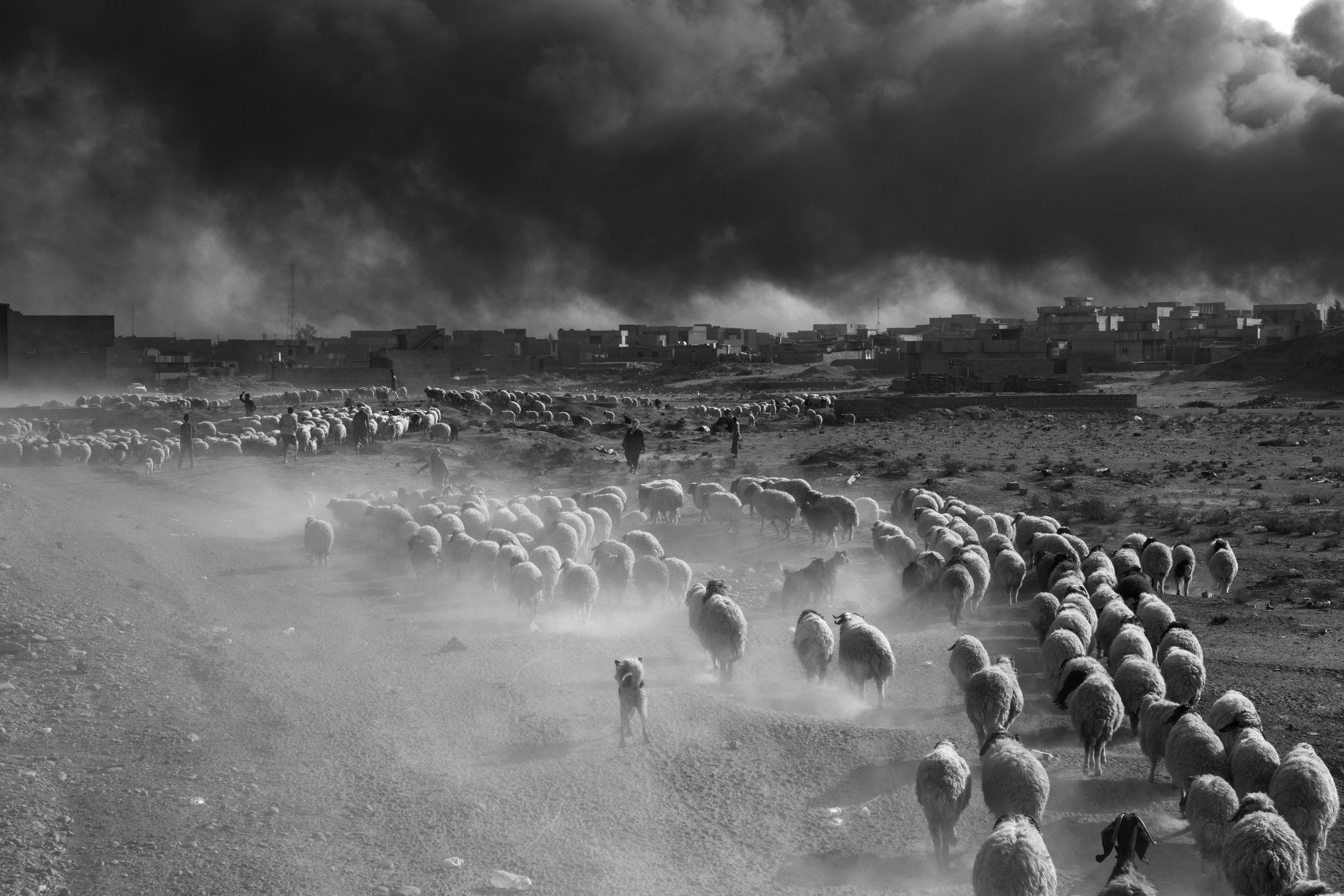
(Photo: Paolo Pellegrin/Magnum Photos)
To many who are not watching the Middle East as you are, it seems ISIS came out of nowhere. Would you disagree with that?
There are always causes and effects. ISIS is a monster, for sure, but it didn’t appear out of nowhere. One could go back decades, but certainly the U.S.-led invasion of Iraq in 2003 was, in my opinion, a gigantic strategic blunder that caused enormous suffering for Iraqis, obviously, but also among the many forms of radical Islam that we now see. It’s not only that, because there’s the whole Sunni-Shia conflict. In a way, it’s this Third World War fought by proxy, where everybody—the Gulf states, the U.S., Iran, everybody—has some interest, has a hand in one way or the other. People are just caught in between these great games.
Are you spending most of your time working in the Middle East these days?
For the last couple of years, yes, for sure. But since my daughters were born, I have accepted the idea of a double professional life. I do a lot of editorial work—it’s what I want to do, and it’s one of the reasons I decided to become a photographer in the first place—but I’ve also started taking more commercial jobs. I do a bit of both.
When did you join Magnum, and how do you think that affected your photography?
I joined in 2001. I was already 35-ish, so, to a degree, already a somewhat formed photographer. That doesn’t mean anything, because photography is a lot like writing—like life, it’s a living, transforming language. But some photographers joined Magnum very young, and I think, for them, the agency really shaped a vision. I joined a little later, after having worked for a number of years in a French agency called Vu. If you do this type of work, Magnum is an inescapable reference. I started becoming interested in photography in a pre-Internet world. Growing up in Rome, there were two bookshops, essentially, that carried a good selection of photography books. Many were of Magnum photographers, so the idea of this somewhat mythical agency or group of people was ingrained in me from the beginning.
Magnum has a system that’s quite effective in a brutal way, whereby it takes several years to become a member. Becoming a nominee is already quite difficult because every year many, many portfolios are received. But then even more difficult is to become an associate, and finally a full member. The percentage needed to pass these [two] steps increases each time. So as a nominee, you need 51 percent of the votes, and to become an associate, you need 66 percent of the votes. And in such a wonderfully complicated community as ours, 66 percent is big consensus. All this to say that what Magnum does, especially in those four years, is it really pushes you to your limit, to dig as deep as you can into yourself, into your work. In some cases, we see photographers produce some of their best work as a result of that process, because it’s this live-or-die, no-escape situation, which can crush you—and sometimes that happens too—or it can work.
Why do you think Magnum picked you?
I think they must have seen what we always look for, which is a sense of authorship, a distinct point of view. Because, as you mentioned, especially when working on these big international stories, there are many, many photographers. I think, as a general rule, Magnum looks for the seeds of a distinct voice. I hope that’s what they saw in me.
Is that what you look for when you are judging?
Yes, for sure. I like to see something that I haven’t seen before, or to see the same things that I know, but from a different perspective. I think this idea of a unique voice is really quite central to that process.
What does Magnum do concretely for a photographer like you?
What I find extraordinary is when we do get together. As painful, as cross as it can be at times, you’re also informed by being in the same room or having exchanges with people that you have always looked up to and respected, and that are really part of the history of this medium. In that sense, it’s an incredible privilege. As far as I’m concerned, I get a lot of my own work, and I have a few established relationships with editors or magazines. So it’s not really about [Magnum] getting work or disseminating it for me. It’s being part of an idea or maybe even a utopia, one could call it. That sense of honor and responsibility is something precious, and you want to honor it as best you can.
During last year’s trip to Mosul, one photo of a horde of sheep particularly stands out. What’s happening there?
This one was taken in a town called Qayyarah, southeast of Mosul. This is a town where the U.S. and coalition airstrikes were trying to target ISIS. What ISIS did was set fire to the oil fields, hence the black smoke. It’s a very apocalyptic scene. This town is also on a main road that goes toward Mosul. It was used by people to flee. I went there for several days and kept seeing these large groups of sheep. The farmers were running away with their cattle because it’s their livelihood, and also because both ISIS and the Iraqi army would slaughter the animals to eat them. On this particular day, there were a lot of shepherds with their families. I guess it’s a pretty ominous, somewhat even Biblical scene. In a sense it does something that I’m always interested in in photography, which is to create a tension between the specific and the universal. I find that, when photography does that, when it combines the personal, the specific, and an echo to something larger, that’s always interesting.
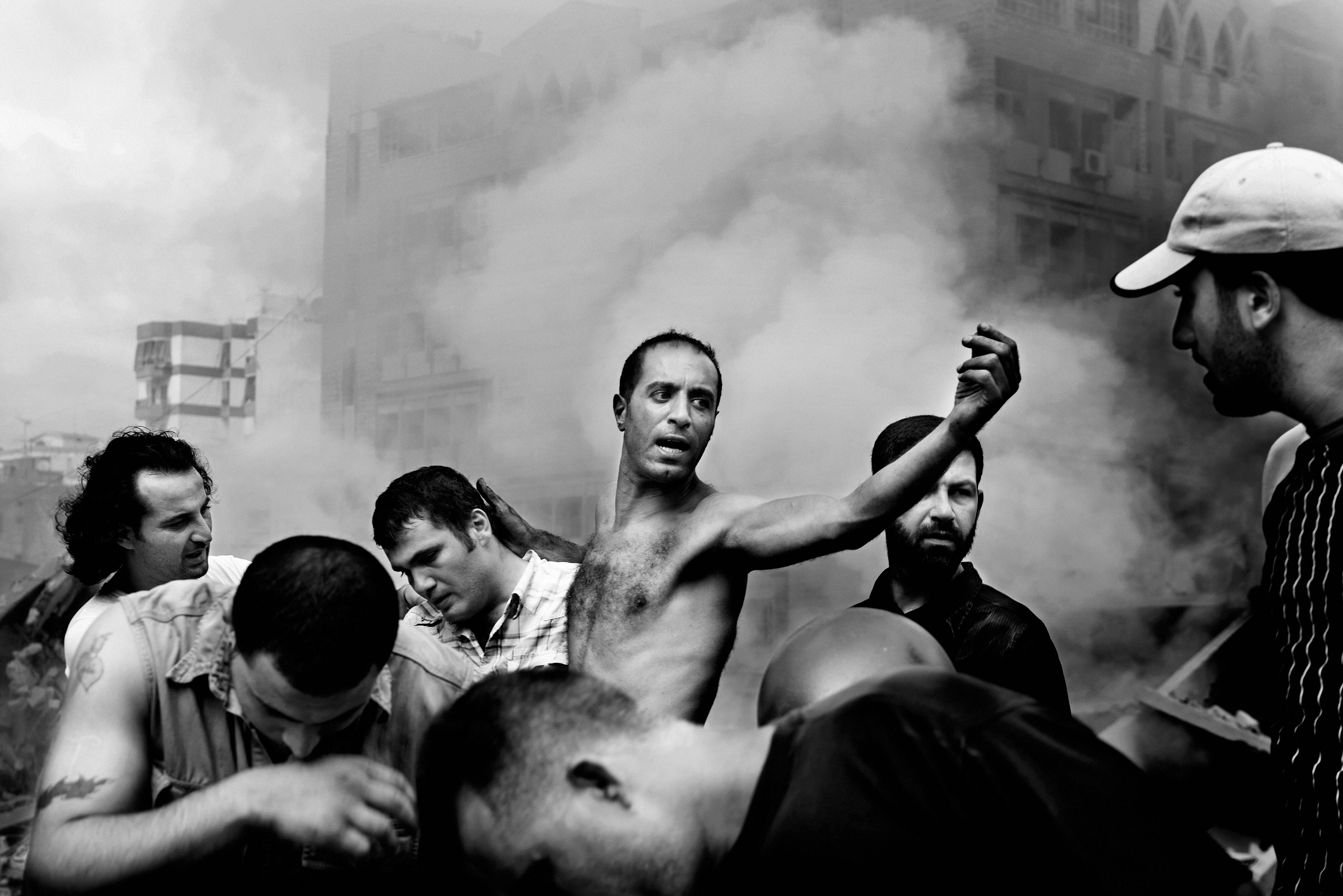
(Photo: Paolo Pellegrin/Magnum Photos)
Is this an image that you particularly like?
Yes, I do. There are images that you recognize immediately in the viewfinder, and this was one of them. I thought, “Jesus, what an incredible scene.” The setting, with the black smoke and the sheep lifting dust, that was pretty impressive.
When you went to Iraq back in 2003 to cover the U.S.-led invasion, you decided not to embed. Is it still possible to work that way today?
Yes, I think it would still be possible, but I wouldn’t do it. I would not do it again. The ratio of time spent just trying to survive to time spent on making pictures was so unbalanced that it didn’t make much sense.

You were very much against the practice of embedding at the time. Have you changed your mind since?
I think you can still maintain your integrity when you’re with one of the parties. If it’s possible, you can switch to the other. I did that in Israel and Palestine, for example. I worked with the Israeli Defense Forces, and I also worked with the Palestinians.
There has been a lot of talk about freelancers, a lot of them young freelancers, just going to these very dangerous places, even though the industry today is often unable to support them and guarantee their safety. Is this something that you have come across?
Yes, I’ve come across it also in my own experience. For many years, I didn’t have a contract, and I would go to places on my own with no assignment, with no insurance, with no nothing. From my understanding, and from my partial experience, it has probably never been as dangerous as it is now for journalists to cover certain stories, particularly in the Middle East. It’s a huge matter of preoccupation for everybody, especially for young photographers, young journalists, who, as you say, might have no support. In this last project I did in Mosul with the New York Times, for the first time the writer and I worked with a security consultant who was a trauma medic. I have to say I had never worked like that before. At the beginning, I didn’t know what to think, but actually he was a great asset to have. To go into an active combat area and know you had a medic with you, that’s huge.
You were injured in Lebanon in 2006. What happened?
I was working for Newsweek, covering the war between the IDF and Hezbollah in southern Lebanon. I remember this pretty adventurous drive through Jordan. I was on my own. I remember spending a lot of money with these local drivers that would run across the border, because the IDF was shooting at vehicles, so it was dangerous. After my Newsweek assignment was finished, Scott came over and we started working on a magazine piece. Then there was a day in this town called Tyre in the south of Lebanon, where we were very close to an explosion and were injured. I had shrapnel in my head; we both had a big concussion. The New York Times was trying to arrange a safe passage with the Israelis, because they had declared a 24-hour curfew, so nothing could move. Scott was fainting—I didn’t know if he had internal damage. I wanted to take him out of there, but we didn’t succeed. One morning—I think it was the fourth day after the incident—we gave all our money to the only guy who was crazy enough to drive us from where we were staying to this river, and we organized another car from Beirut to pick us up.
And you decided to stay there and keep working. Where did you land this striking image of men huddling amid billowing smoke?
Yes, Scott and I both had a concussion, but nothing major. We started covering what was going on in Beirut’s Dahiyeh neighborhood, a Hezbollah stronghold that was being hit. One day we were just driving around, and we heard this gigantic explosion. We rushed toward it. Several large apartment buildings had completely collapsed—people were in shock. The man in the photo was commandeering the operations of searching through the rubble. He was calling others to come. Then a few moments later, after that picture was taken, they extracted the body of a girl, which, as we understood, was his daughter.
Did this close call in Lebanon change your way of working?
What really did is the birth of my first child. That changed my position in the universe, and my whole system of responsibilities. In truth, it also introduced an unsolvable problem, which is that I don’t want to expose myself to danger in the same way I did in the past. At the same time, I don’t want to negate my calling. It has been a conflict to a degree, but the imperative really is that the girls come first. It would be so unfair if something major happens to me. I really factor that a lot in what I do now. I still go to places like Mosul, and it’s very difficult because how do you really judge? It’s hard to say, “OK, I’ll stop now,” or maybe, “Let’s do another 50 meters.” It’s a mystery, really, how those decisions are made.
Why do you think you continue to go back out into the field, despite the risks?
It’s a complex question, so there are many orders of answers. First, and maybe this is naïve of me to say, but I still believe in the power of photography to be an agent of transformation. I’m not saying that we’re changing the world—it’s not a cause and effect—but both as a reader and as a photographer, I believe in introducing these scenes, these notions, in our communications systems. A picture can penetrate, and it can make you reflect, and maybe move your attention. That’s an important dynamic, and I feel privileged that, through my work, I can be part of that equation. The belief in the capacity of photography and of photographers: I would say this is the cornerstone. Then, there’s the mystery. I can rationalize up to a certain degree, but when the decision needs to be made, it seems that, most of the time, I make the decision to go. There’s a tension between analyzing and trying to deconstruct logically the argument, and then just making a decision.
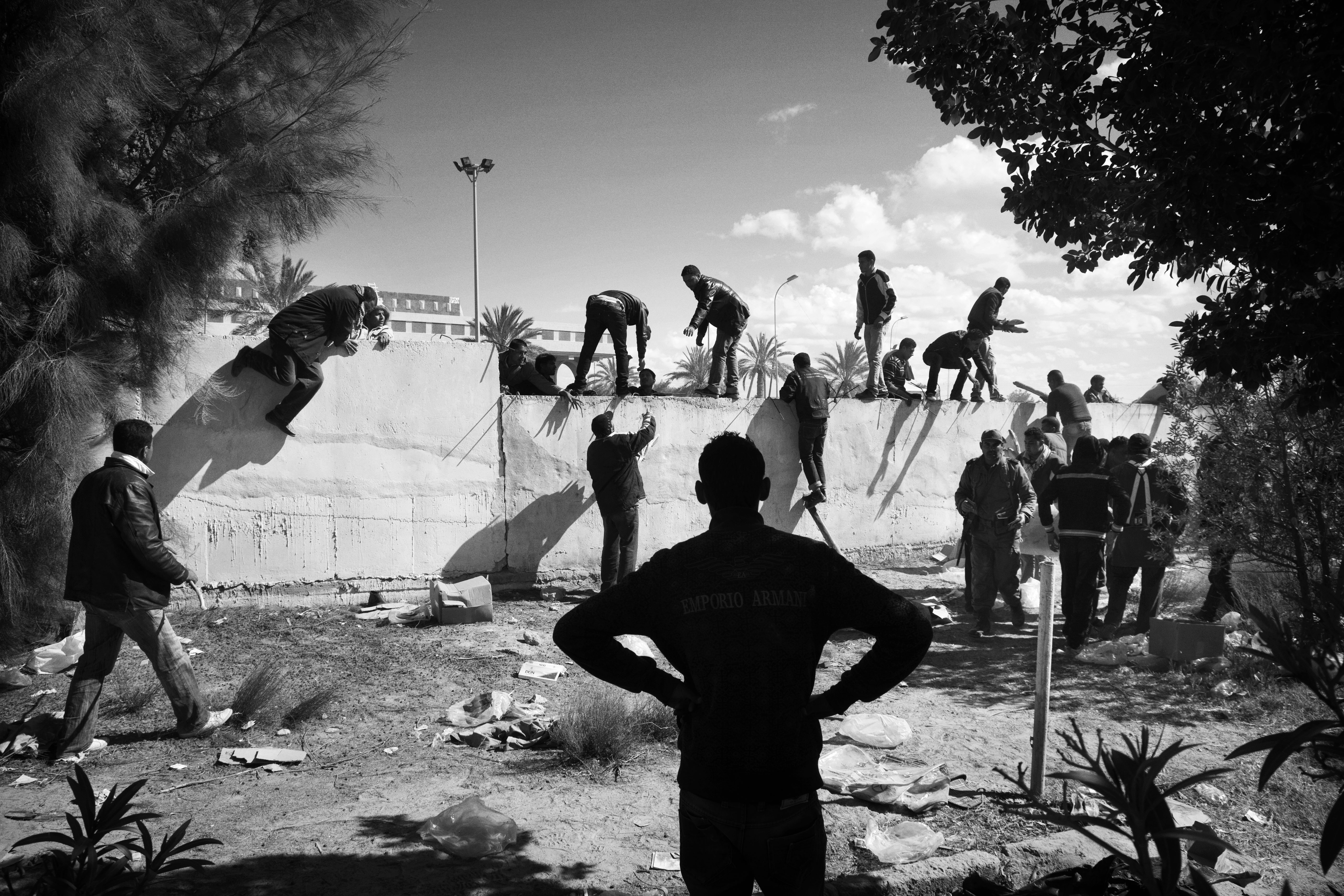
(Photo: Paolo Pellegrin/Magnum Photos)
Do you feel like you owe it to the people you photograph to always come back?
That’s another layer. Yes, I owe it to the people, I owe it to the issue, or to the story. In Palestine and Gaza, for example, I feel a connection. By the way, I feel it with Israel too. I feel a bond to that story and to the people I’ve met on both sides over the last 20 years or so. But there are other elements too, more personal things. The experience, the journey. I have been testing myself, and pushing some limits, and confronting my fears as well. So it’s a process. But it’s always a very complex question, where I weigh many things every time, but that also has an imponderable element, which maybe is just intuition. Maybe it’s also my calling. The fact that I really believe in what I do, and in this type of work.
You aren’t always on the frontlines. In a photograph you took in Tunisia, in 2011, we get an idea of the conflict inside Libya from the people who are fleeing.
That was at the Libyan-Tunisian border. People were running away and amassing at the borders. They would stay there for long hours, sometimes days. Among them were daily workers from Pakistan, Egypt, and all over. The Tunisians would open and close the border at will, or according to their mysterious calculations. There were thousands of people. It was very hot. You didn’t have enough food or water. They tried to—and sometimes succeeded, like in the case of that picture—to jump the fence or jump the wall and come into Tunisia. I suppose it’s a nicely composed image, but what’s interesting is this central figure, this person that we see from the back, who is a spectator.
Do you remember taking the time to compose it?
I remember the central idea of the guy, because he’s what captured me the most. It was this strange, vicarious feeling of looking at something through him, somehow. Then things just started happening, with the guys jumping over the wall.
Is this how you prefer to work, taking the time to think about each frame?
It really depends. The context determines the approach. I’m certainly interested in the idea of picture-making, of having some time and waiting for things to unfold—this Bressonian idea of things composing themselves in the viewfinder, and you’re there like a hunter, just waiting for that moment to capture it. I spend a lot of time doing that, but I’m also equally interested in a more reactive type of photography, where things are very fast and very fluid, and you are just there with the camera as if you were a witness.
The industry you work in has been changing drastically in recent years, and in many ways has been democratizing. Are you noticing this in the field?
Yes, of course. I’m personally all for it. It is a very white-male, Western vision that we impose on the world. I regard it as a fact. I’m not scandalized by it, but at the same time, I’m very interested in the fact that more voices are introduced in our systems of communication. As a consumer—a reader—of the news, I want to have a variety of perspectives, especially in complicated areas where it takes half a lifetime to even begin to understand that you haven’t understood anything. As a professional photographer, I don’t fear this. There might be more photographers today than ever before—it’s all fine. I think if you have a point of view and if you work hard enough, there will always be a place for your work.
A version of this story originally appeared in the July 2017 issue of Pacific Standard, which was produced in partnership with Magnum Photos.





